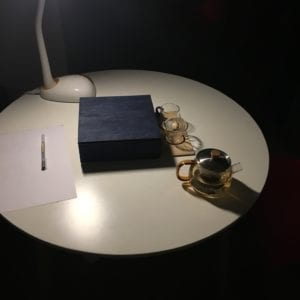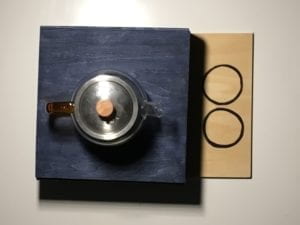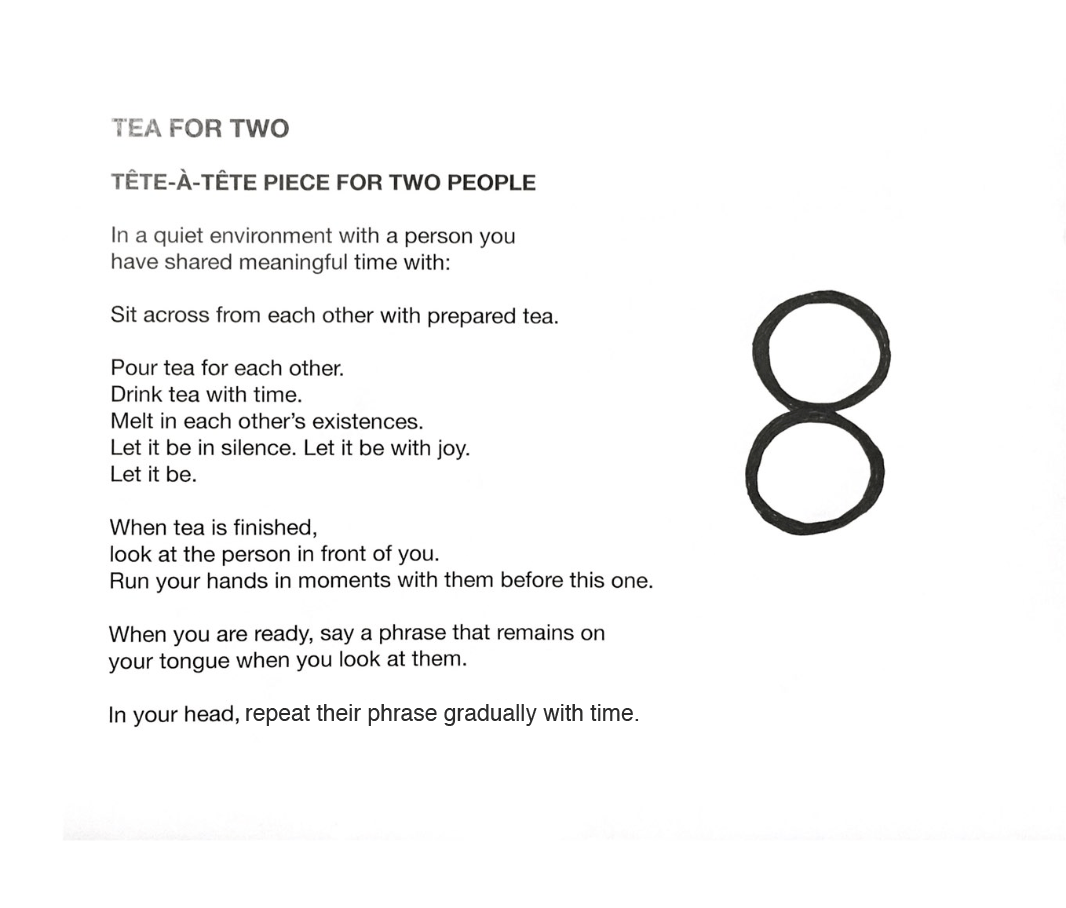For my final project, Gabe and I designed two person performance art piece called Tea for Two which utilized a tea set and an event score.
Our intention was to allow individuals to feel power with words that deserve time to be heard with people they care about. We wanted to tackle this because words when said often pass us so briefly and instantaneously that sometimes they are not digested thoroughly. Sometimes due to this lack of time or because they can be easily said, they can be used cheaply and their power becomes dulled. I wanted to focus on verbalizing these words in person rather than through text because it lets two individuals be in a moment together and hear these words manifest naturally in the present rather than on paper or screen and see these words that were written in the past before the moment they are read. This also allows one to create time for an experience in their lives and bring people together to say a phrase that deserve time to be heard for a person they think deserves to know it.



I really wanted to utilize this Final Project to design something experimental, and stray away from technology and design that is functional and useful for the masses and the everyday. Throughout this class, I noticed that the idea of a thing’s functionality and usefulness more often than not is attributed to it’s degree of value and worth. I do think keeping this idea in mind is good for designing with purpose — when it’s necessary. You should question why aspects of your design are there. However, I frequently find this mindset difficult to tackle with the arts — which is why I inserted in the last slide of the presentation: Why design? This question lingered in my mind throughout this entire project — why? Why this project?
Frankly, I had a lot of doubts about the value and validity of my project despite the fact my intention was clear. Why should people care? Why should I care? When looking at or creating art, writing, etc., the more the answer to this question gets muddled and faded. It makes me think about Susan Sontag’s Against Interpretation which suggests when you interpret art or find its reason for its existence (like its form or style), you begin to reduce it for what it is — you make it digestible and palatable.
Thinking about this question, the reason why I think people should care is because I strongly believe my project — and art, design, writing, really anything that interests anyone — allows a window for an experience that enriches one’s life. With my project, I create a window for an intimate experience between two people who mean a lot to each other an opportunity where they can digest words that mean something to an individual for another individual after they share a conversation over tea. It allows individuals to hear what should be heard and it allows you to take time to appreciate that individual in your life, not over a card or a letter but in a face-to-face conversation and with a single meaningful phrase. I chose this piece as the vehicle which drives this belief. Despite this reason, whether you believe in what I design or create isn’t a decision I make — I only persuade you and its up to you to believe in what I believe.
In regards to the design process, Gabe and I thought creating an event score + tea ceremony was the best way to approach this project after we shared each other’s inspirations and ideas while we expressed our wishes to make a tea set. Then we thought instead of creating an interactive and tactile piece, why not incorporate our inspirations at the moment into our intention by designing an experience like Tom Sachs’s tea ceremony and Yoko Ono’s suggestive Grapefruit event scores? I think by approaching this project in this manner, we have the opportunity to touch a more intimate, sensitive experience with art and share the experience of our intention — not only do we allow two people feel power in words, but we allow two people to be present for these words meant for you. I think this approach makes the experience with this art piece more powerful.
Because of this intimate experience, I wanted to integrate this experience subtly and naturally as possible. I didn’t want to create something artificial. This consideration for the natural permeated through the entire project. As I wrote the event score, I didn’t want to have them do a specific action as Yoko Ono does in some of her pieces like to “Scream at …” or “Eat a tunafish sandwich.” Drinking and making tea seemed like already a very natural and nature-like experience, and while the event score had less specific requests, it was done on purpose. “Melt”, “Let it be,” “remains,” and “gradually with time” were phrases I thought and felt were ones that are out of our control. I wanted words you said to the other person to emerge and settle. I wanted the individuals to appreciate the time spent together. You could say I wanted the words and experiences to be like how tea leaves are when they are sprinkled in a hot cup of water and then sink, saturating the water over time.
Final thing I want to add to this reflection is the symbol we used. Gabe incorporated the two circles just for design for our tea tray, but I found a lot of meaning we could incorporate in it. I liked how they were just touching like how we often graze by others in our every experiences, how it looked like a figure-8 or a sign of infinity like how all of our experiences are embedded in the past forever, and how it looked like two tea cups touching. I also think by drawing in the symbol, it again emphasized the natural aspect. I thought it was a nice touch!
Ultimately, I really enjoyed this project despite my insecurities about it in the end because it made me think more about why I design, what is design, and why design at all — an approach which I tried to hold when taking this class.